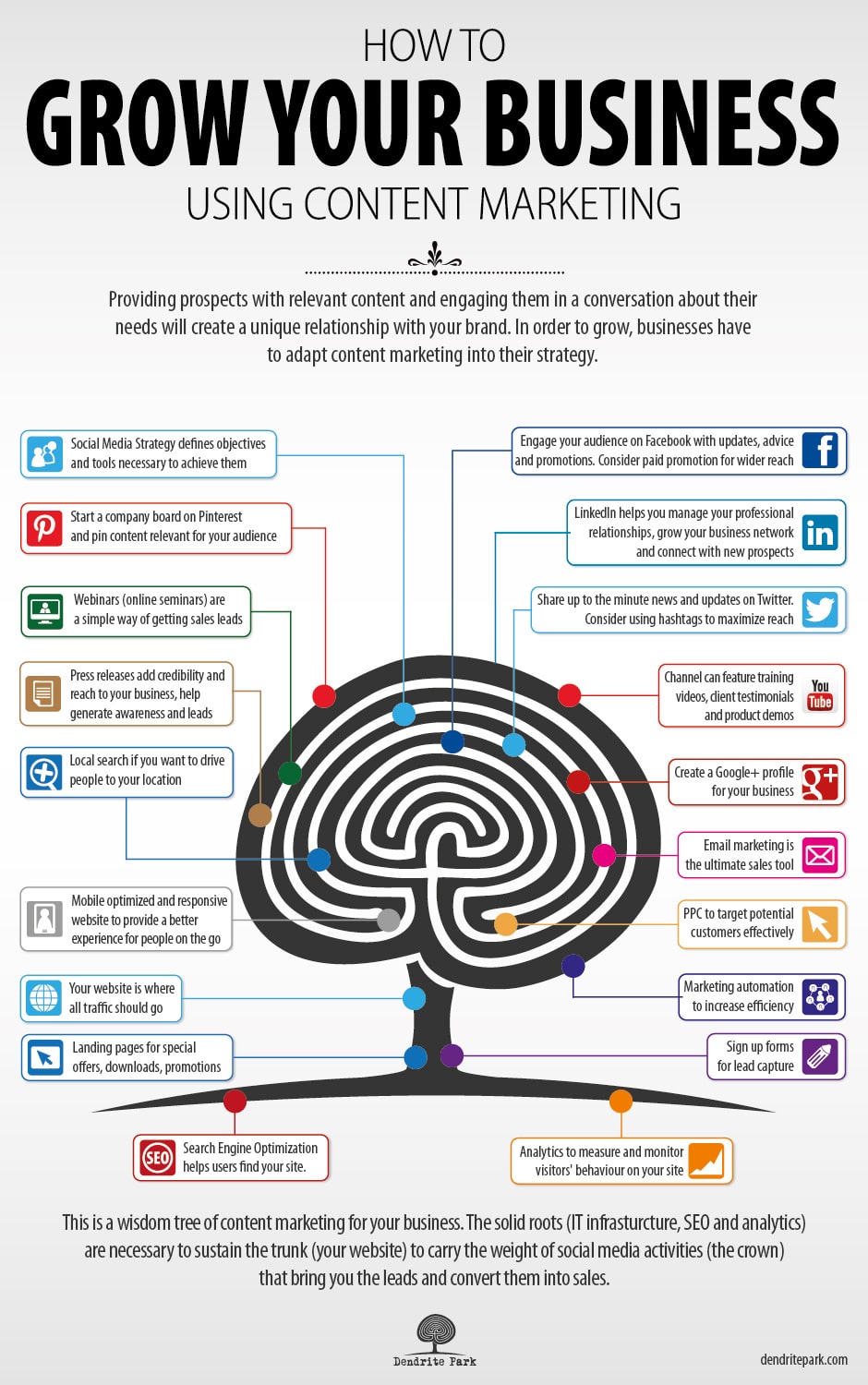Content Marketing Strategies to Grow Your Business Organically
Optimize Your Website for Searchability
Within any content marketing strategy, website optimization is key to growing organic traffic. Search engines use various signals to understand what pages are most relevant for specific search queries. Several important on-page factors determine how well pages rank, including: Title Tags and Meta Descriptions. Include 2-4 keyword phrases relevant to the topic in the proper page elements. Make titles compelling to click and descriptions summarize the content. Internal Link Structure. Interlink related pages using descriptive anchor text to help search engines better understand what each page is about. Create a natural information hierarchy. Heading Tags. Break up content into logical sections using H2 and H3 tags. Place important keywords near the top to signal relevancy. Image Alt Text. Add alt text descriptions to images on pages to provide additional context for crawlers. Include focus keywords.

Develop Educational, In-Depth Blog Content
Blogs are a cornerstone of most successful content marketing programs. Consistently publish long-form, educational articles over 300-800 words to build authority as a thought leader. Target specific topics and themes to attract qualified audience. Research Popular Topics. Analyze search data and audience behaviors to identify frequently searched concepts. Optimize individual articles around shorter head, mid and longtail keywords. Craft Knowledge-Dense Articles. Go beyond superficial discussions to deeply explore topics. Provide how-tos, case studies, and unique insights readers cannot find elsewhere. Give value without directly selling. Incorporate Multimedia. Break up dense blocks of text with images, videos, infographics and more to improve engagement. Optimize multimedia with relevant alt text and captions.
Leverage Visual Content Strategies
While written content forms the backbone, incorporating visual elements engages readers more effectively. Optimize photos, graphics and videos for sharing on social platforms. Create Step-by-Step Tutorial Images. Walk through processes and procedures with a series of photos or screenshots. Add descriptions for each image optimized for search. Develop Branded Video Content. Whether tutorials, interviews, or explainer videos keep them short 1-3 minutes. Transcribe videos and optimize headers, descriptions and filenames. Curate High-Quality Stock Images. Select photographs that establish brand identity and reinforce messages. Properly attribute and license all images used on site and social profiles. Design Impacting Infographics. Visually outline statistics, summaries, processes or concepts in a visually appealing format readers want to share. Always provide attribution and sources for any data used.
Develop Targeted Social Media Strategies
While blogs are ideal for in-depth articles, social platforms perform best for quick bites of timely, lightweight content. Develop a publishing plan tailoring formats to each major network. Craft Titillating Facebook/LinkedIn Posts. Publish a variety of content 1-2 times per day including articles, images, videos or questions to spark engagement. Optimize posts for space and formats. Share Valuable Tweets. Keep tweets concise at 120 characters with links back to in-depth articles for followers to explore. Build rapport through respectful conversations. Curate Instagram Stories and Reels. Create visually compelling short-form video content around 1 minute maximum focusing on lifestyle and passions of target audience to develop trust. Develop Long-Form LinkedIn Posts. Leverage the professional network by publishing longer 600+ word posts weekly analyzing industry trends, insights or case studies to demonstrate thought leadership. Always provide value first before any promotions.
Develop Targeted Outreach to Industry Influencers
Connecting with other notable names in your field through inbound links builds credibility and trust with search engines and potential customers. Focus efforts on those actively engaged within areas of focus.
Research Top Blogs and Publications. Find websites covering related topics that receive significant traffic. Reach out pitching exclusive contributor pieces or opportunities to be featured/interviewed. Build Relationships with Industry Figures. Follow notable experts on social media, engage thoughtfully with their posts and occasionally share their best content. Over time, look for partnership opportunities like guest posting or profiling their work. Contribute to Industry Events and Conferences. Whether sponsoring, speaking, or helping coordinate related sessions, these opportunities allow connecting face-to-face while promoting expertise to a qualified audience. Always look to provide value first. Join and Participate in Industry Groups. Follow associations, forums and communities online and off focused on pain points prospects care about most. Become a helpful, thoughtful member of discussions to become a known name.
Measure and Optimize Ongoing Results
To continuously improve efforts, invest in analytics tools monitoring key performance indicators. Review metrics regularly and test optimizations continually learning what resonates most with target markets. Install Google Analytics. Track metrics like traffic sources, page views, time on site, conversion rates and more. Learn what types of content and channels drive most meaningful results. Evaluate Social Analytics. Monitor engagement rates and demographics reached per platform to understand what formats and frequencies work best. Continually A/B test newer strategies. Review Site Search and Goal Completion. Understand topics site visitors search for internally and drop-off points inhibiting conversions. Address gaps and pain points discovered. Set Quarterly Content Goals. Establish targets for articles, shares, backlinks and other quantifiable benchmarks. Monitor progress and adjust strategy as needed every 3 months based on insights uncovered. Survey Audience Regularly. Solicit honest feedback on experiences and preferences. Incorporate perspectives into future content, products and service improvements strengthening relationships over the long-term.